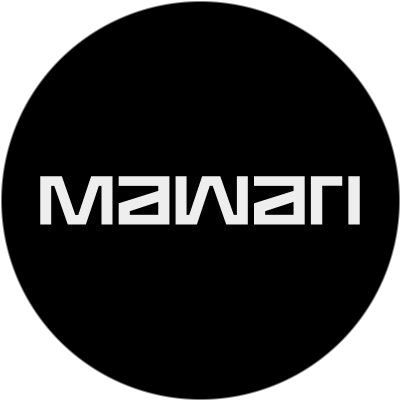
Mingo
Mingo is a digital communication platform built on the Hedera network. It was designed to merge traditional messaging with the power and efficiency of Web3. Its foundational feature is a multi-messaging aggregator that consolidates various chat services into a single, unified inbox. This allows users to manage conversations from different platforms without constantly switching applications.
It features a multi-asset crypto wallet powered by Hedera, enabling users to securely manage HBAR and other Hedera-based tokens adding transaction features to its chat services. By utilizing the Hedera public ledger, Mingo facilitates instant, low-cost crypto transactions directly within a simple chat interface.
In addition to its Hedera-powered wallet and message aggregator, Mingo provides its own secure, end-to-end encrypted Mingo Chat. The platform’s strategic goal is to leverage Hedera’s speed, security, and low fees to bridge the gap between Web2 and Web3. It seeks to demystify cryptocurrency and encourage mainstream adoption by embedding intuitive and powerful decentralized finance functionalities into an essential, everyday communication tool.
Project Information
Related Projects

HiveTracks is a software company focused on providing digital tools and data-driven insights to beekeepers and supporting sustainable apiculture practices. It offers a comprehensive hive management platform through its web-based and mobile applications.
The HiveTracks platform enables beekeepers to meticulously record and monitor various aspects of their apiaries including colony health, inspections, treatments, feeding schedules, and honey harvests.
A significant aspect of HiveTracks' approach is its utilization of the Hedera Hashgraph distributed ledger technology (DLT). Leveraging the Hedera blockchain, HiveTracks enhances the integrity and traceability of beekeeping data by creating auditable records for hive health and establishing honey provenance. Furthermore, the Hedera integration enables beekeeper participation in emerging environmental markets such as carbon credits and data validation services.
HiveTracks specialized services empower beekeepers with robust data management capabilities while fostering a first-of-its-kind connected community. It also contributes to the overall health and longevity of bee populations and global climate health by promoting responsible and transparent beekeeping.

Mawari is a technology company focused on building infrastructure for the 3D internet and spatial computing. It primary work is in developing a decentralized network to power the real-time streaming of immersive, AI-driven 3D experiences with near-zero latency.
The core of Mawari's offering is its Decentralized Content Delivery Network (CDN), a globally distributed network of GPU-powered nodes. This network, combined with Mawari's patented 3D streaming codec and a spatial rendering and streaming SDK, allows for the efficient cloud rendering and delivery of complex 3D content to a wide range of devices, including smartphones and XR glasses. This technology is designed to break the bottlenecks of traditional infrastructure, making high-quality, interactive AR and VR experiences scalable and accessible. The network is built on a Decentralized Physical Infrastructure Network (DePIN) model, which incentivizes individuals to contribute their unused compute resources.
As a participant in the Hedera ecosystem, Mawari is exploring how Hedera's fast, secure, and sustainable distributed ledger technology can be integrated into its decentralized infrastructure to enhance the security, transparency, and efficiency of its network, particularly as it expands its reach in the burgeoning spatial computing and 3D internet markets.

The Porini Foundation is a Swiss-based non-profit organization dedicated to bridging the gap between innovative technology and nature conservation. Founded by experts in wildlife biology, blockchain technology, and sustainable business, its mission is to support climate and nature conservation projects by leveraging disruptive technologies, particularly zero-carbon blockchain solutions, to align with the UN's Sustainable Development Goals.
The foundation's flagship initiative is Nature Collectibles, the first global marketplace for NFTs for Conservation (NFTCs). This platform allows individuals to purchase digital collectibles that are directly linked to real-world conservation projects in protected areas. Each collectible represents a specific species, and 100% of the proceeds go directly to funding conservation efforts, with the foundation covering all transaction fees. This creates a transparent and direct funding channel for vital conservation work.

LeewayHertz is a software development company with a strong focus on emerging technologies. Headquartered in San Francisco, the company has a global team of developers and designers who build custom digital platforms for a wide range of clients, from Fortune 500 companies to startups.
The firm offers a comprehensive suite of services, with a particular emphasis on AI development, Web3, and blockchain solutions. Its expertise spans a variety of technologies, including IoT, generative AI, and mobile app development. LeewayHertz provides end-to-end solutions, from initial consulting and feasibility analysis to the design, development, and deployment of enterprise-grade applications.
LeewayHertz has a deep and established integration with the Hedera network. It offers a full range of Hedera Hashgraph development services, including custom dApp development, smart contract creation, and the tokenization of assets using the Hedera Token Service (HTS). Its team includes Hedera Hashgraph ambassadors and has a proven track record of building and deploying solutions on the network. This expertise allows them to provide their clients with secure, scalable, and high-performance applications that leverage the unique advantages of the Hedera network.
